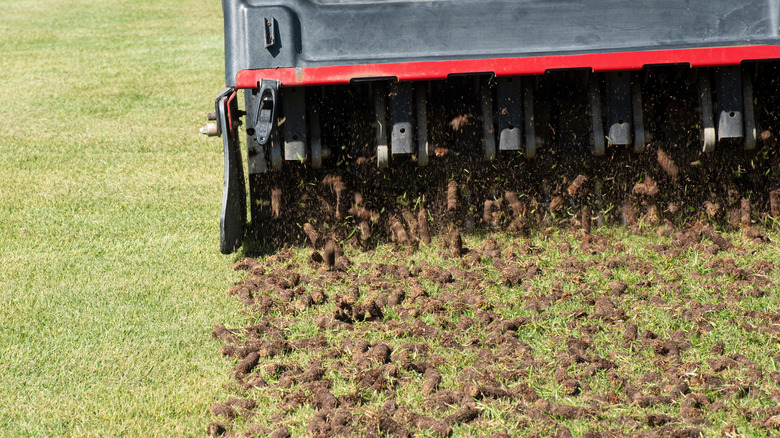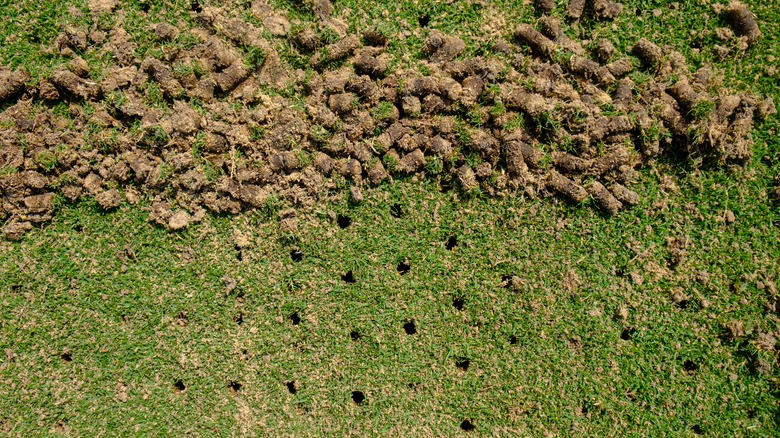One Mowing Mistake To Avoid After Aerating Your Lawn
Aerating is a vital practice in lawn care. It involves the creation of small holes in the soil manually or with a machine to combat compaction, where the soil becomes densely packed and hinders the movement of air, water, and nutrients to the grassroots. By promoting better air circulation and nutrient absorption, lawn aeration fosters a conducive environment for grass development. However, one simple mistake can prevent you from getting the ideal results after aeration, and that's mowing too fast.
To maximize the benefits of the aeration process, it's important to carry out all the necessary steps in the correct order. You should water the lawn properly two days before aeration and then fertilize and seed it right after, per a Virginia Cooperative Extension publication. Mowing comes much later after the grass and holes in the soil have time to rest and recover. It's also advisable to avoid heavy foot traffic and the application of herbicides and other chemical products.
Mowing again too quickly
Aeration can temporarily disrupt the turf and soil structure, so you must give the lawn sufficient time to heal. The recommended period is around two to four weeks. During the process, soil patches called plugs are pulled out and left on the surface. Many people tend to mow the grass to clean up those soil chunks, but the plugs are still beneficial right where they are. Over time, those soil plugs will break down and release nutrients back into the ground through the new holes that were just created.
There are some things you can try during those two to four weeks after aeration if you want to break down the soil plugs faster. You can water the lawn or go over the plugs lightly with a rake to loosen them. Note that you shouldn't rake the whole lawn after aerating but only use the tool to break up the chunks of soil. Left on their own, they'll break down in a few weeks. When you observe the recommended period of rest, you allow the soil underneath to recuperate without additional stress, allowing the soil to carry out its duties without disturbance.

